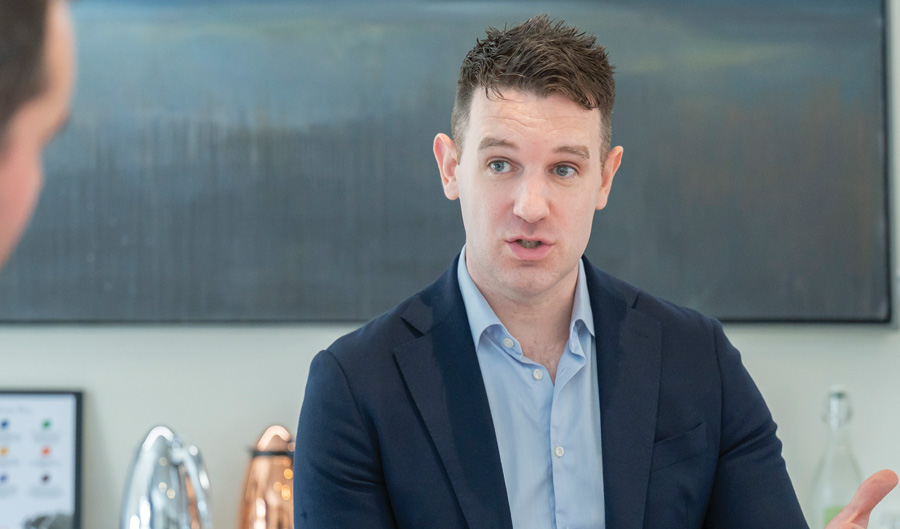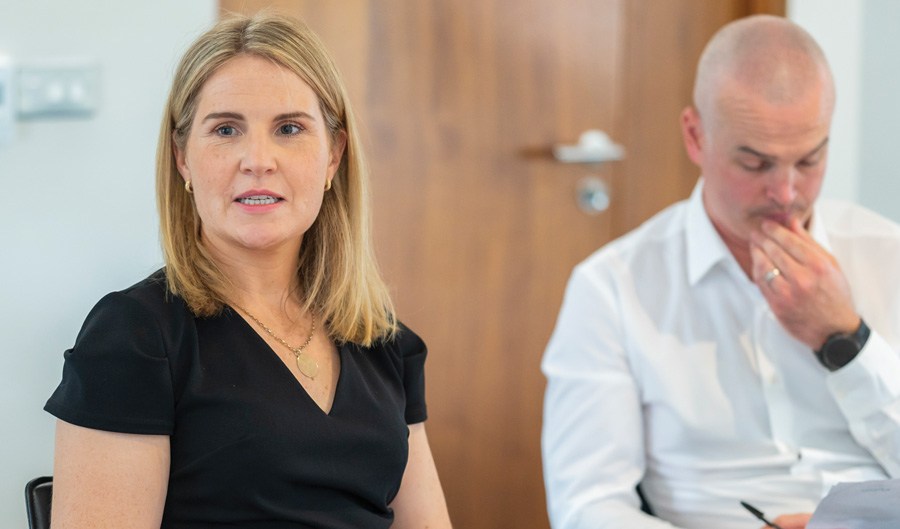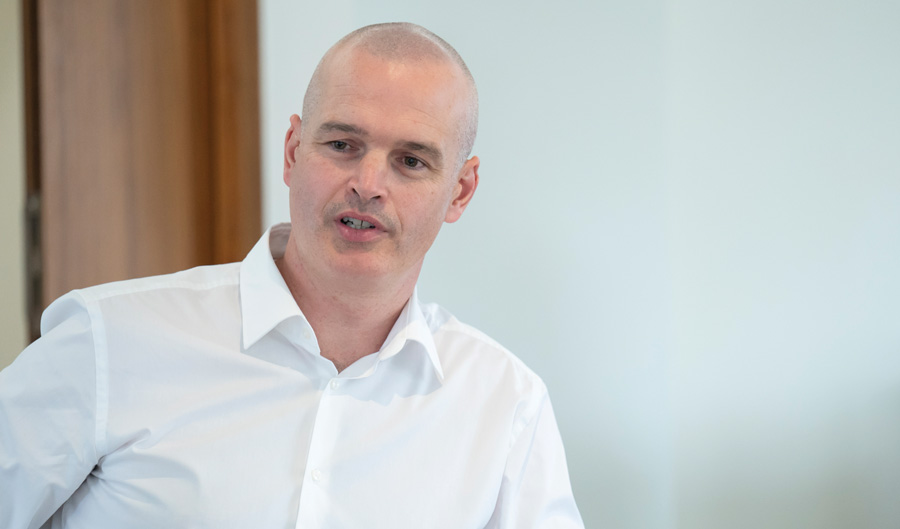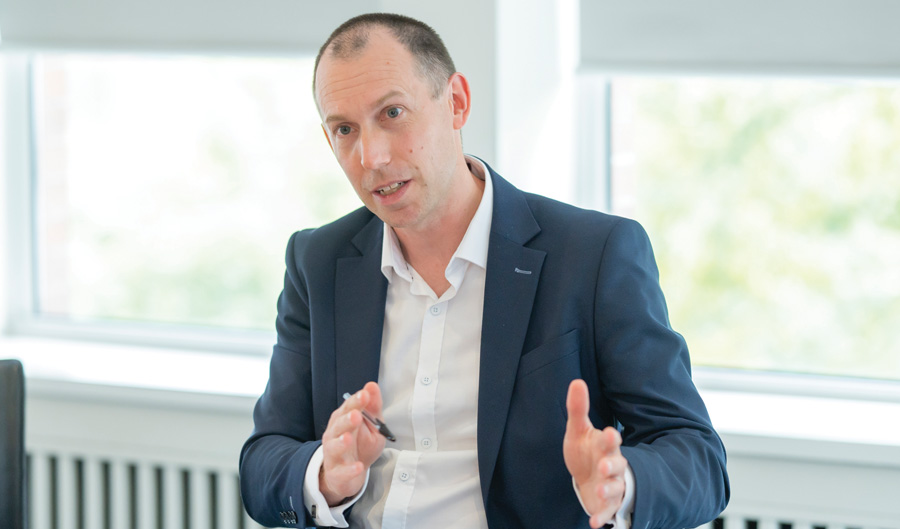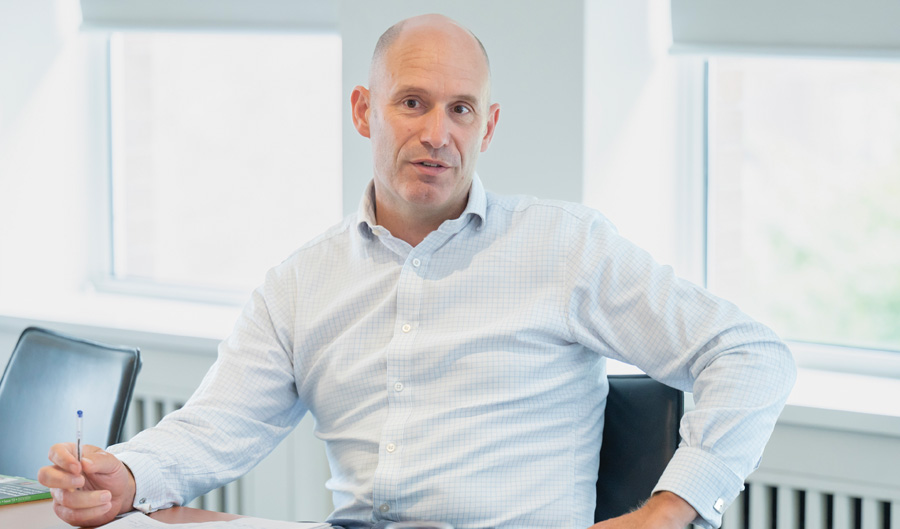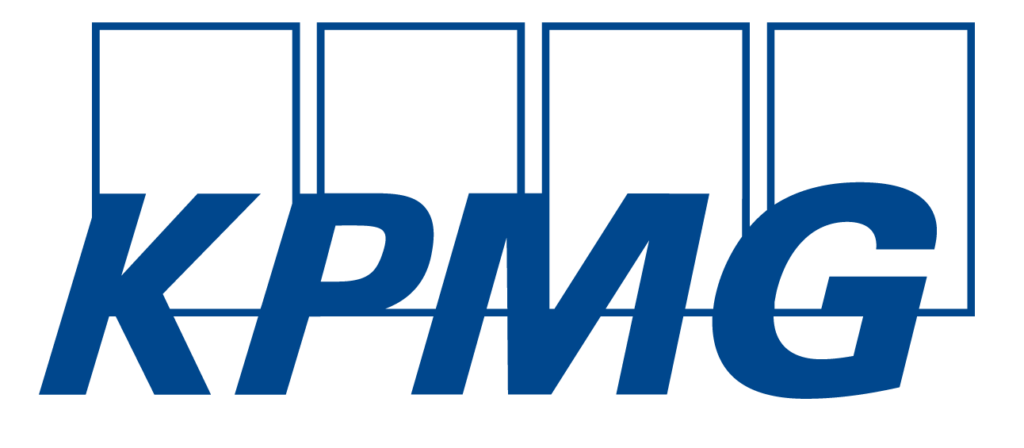
Energy security in an all-island context
4th October 2024
Challenges and opportunities for green hydrogen in a future energy system
4th October 2024Round table discussion: Ensuring secure and stable electricity grid operations
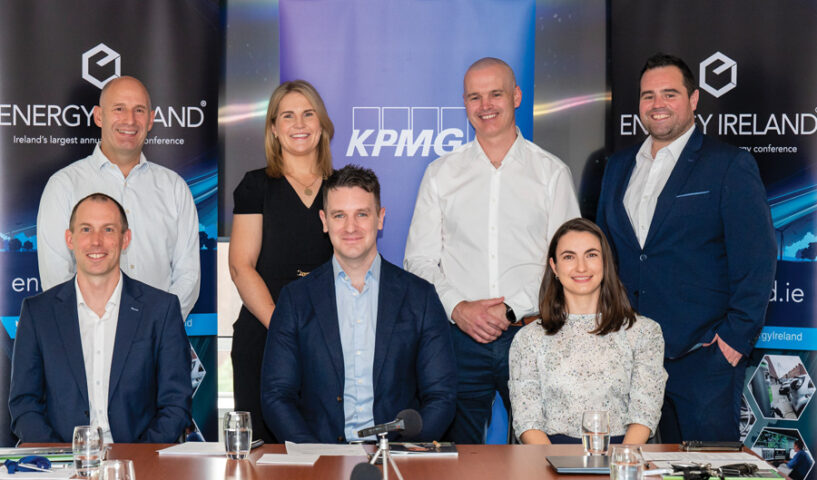
KPMG hosted a round table discussion with key stakeholders across the electricity sector to discuss how increasing renewable generation is impacting on grid security and the role of supporting technologies.
What impact is the transition from conventional generation to greater levels of renewables having on the electricity grid?
Eoin Kennedy
As Transmission System Operator (TSO), integrating large amounts of variable, non-synchronous renewables like wind and solar, presents a range of technical and operational challenges. Over the last
decade, EirGrid, in conjunction with SONI in Northern Ireland, has made huge strides in operating the power system with very high levels of variable renewable generation and currently up to 75 per cent of Ireland’s electricity generation can come from variable renewables at any one time. However, a significant further evolution of the operation of the power system will be required to achieve the unprecedented levels being targeted.
Caitríona Sheridan
A lot of the operational challenges around the amount of wind that can be taken on to the network have been overcome. However, from a developer perspective, what we are witnessing is dispatch down of some 20 to 30 per cent. As a result, we need to build a grid ready for the future and EirGrid’s Shaping our Energy Future is a roadmap for that. The Government is targeting 20GW of wind and solar energy generation by 2030, but our peak demand on the island will be around 8GW, so we need to think about how we can maximise use of the grid and increasing demand for renewable electricity.
James Delahunt
Curtailment and the viability of future projects is clearly one of the most important elements for existing developers as we transition to greater levels of renewables. For those operating the grid, the scale of change needed and resources required is something that has never been experienced before. The upshot is that there is an impetus for all involved to think about how our grid works, and where investment must be prioritised. When you look at somewhere like the United States, where they are pushing for a more developer-led grid, it is clear that there are opportunities to build on a recognised need for investment and innovation in Ireland’s grid.
Laura Mehigan
Not that long ago, the ambition for renewables underpinned the questioning of long-held beliefs of what was possible on our grid, to the point where the TSO became a world-leader in the integration of instantaneous renewables. It also drove developers to influence their supply chains to meet stricter technical requirements that were needed to facilitate extra renewables. That is something that we need to continue into the future, to really push technologies to deliver what is needed to maintain stability.
Rory Griffin
Originally, the grid was designed from power flowing from generation down to the distribution mode. What we have seen with a lot of renewables connecting is a reverse power flow. So now you have a lot of power getting onto the transmission grid, trying to make its way to the demand centres. It has been a reverse of the fundamentals, and credit of the system operator, that have facilitated the renewables we have got up to 75 per cent. There are clear targets to try and get more, and I think the technologies are coming out to help that.
Peter Harte
The most obvious impact is the huge decarbonisation of our electricity grid we have witnessed over the past two decades. The integration of wind and solar onto the grid in the face of growing demand is a big win. I think there is a common misconception that increased levels of renewables on the grid mean instability, when I would argue that the opposite is the case. Historically, we had five or six large generators and disruption to any of these meant a huge shock to grid frequency. In reality, smaller and more diverse generation brings a surprising level of reliability.
What must be done to ensure grid security as the percentage of renewable sources increase? What ancillary services are needed?
Peter Harte
In anticipation of a worst-case scenario event – such as the shutdown of a 500MW HVDC interconnector – there must always be adequate reserve capacity on the system. We have that capacity. Previously, it was procured via fossil fuels but is now being procured from a battery fleet. We do not need any more reserve capacity, and, in fact, we have enough battery capacity – even when the Celtic Interconnector is connected – to jump from 500MW to 700MW. When considering other ancillary services that we may need in the future, the foremost is reactive power. The batteries we have are capable of providing reactive power but, unfortunately, we did not have a sufficiently sophisticated market system to encourage them to locate in the regions where they could do so. Now, the challenge is to build additional reactive power at additional cost. The lesson is to get ahead of these technologies and implement sufficiently sophisticated procurement.
“We can learn from international experiences whereby incentivisation or clear policy signals have enabled the market to bring the solutions forward.”
James Delahunt
Rory Griffin
Fault level is an important service also. When removing conventional generation and achieving a 100 per cent renewable energy system, protective systems must still operate correctly on the grid. Synchronous condensers provide reactive power, fault level, and inertia, so strategically locating those could help stabilise the grid. As part of the first Low Carbon Inertia Services auction (LCIS), EirGrid identified weaker zones on the power system in a 2026 system study. The LCIS auction then incentivised projects to locate in these areas through the creation of locational scarcity scalars. Consequently, it will be interesting to see what the subsequent EirGrid study determines for the LCIS 2 auction. With offshore projects concentrated on the east coast, there will be a focus on Dublin – where there is a lot of demand, and the fault level has been traditionally high. However, with conventional units making space for offshore wind, there may be fault level requirements across the east coast.
Eoin Kennedy
System services will be critically important in terms of managing the resilience of the power system into the future. We are going to need new system service capabilities to manage the new technical and operational challenges. EirGrid has completed a review of the reserve services – as part of the Future Arrangements for System Services programme (FASS) that is ongoing – and submitted it to the regulatory authorities. We will undertake a similar review for non-reserve services in 2025. Considering the operation of the power system amid increased penetration of renewable energy and the need to minimise dispatch down, we must deliver across a range of fronts. Firstly, we must make the grid more resilient and more flexible. Secondly, we must enhance our ability to study and model new phenomena that emerge as we increase renewable energy penetration and understand what the potential solutions are. Thirdly, we must set and clarify operational standards in the Grid Code. Finally, we must remove barriers to new technologies so that they can be implemented at scale, while ensuring that we have the right control centre tools and capabilities to manage the increased complexity of the grid.
James Delahunt
Delivering on the transmission aspect of Shaping our Electricity Future – alongside greater levels of demand-side flexibility – is going to be very important and we are working with creative developers who are seeking to deliver innovative solutions. Similarly, there is a subset of broader policy signals to the market, which can stimulate investment in solutions for grid stability and grid capacity.
Laura Mehigan
We are now observing the impact of delayed infrastructure delivery, particularly in Northern Ireland, which has experienced extremely significant constraints and dispatch down. However, there are quick wins to increase the percentage of renewable energy on the system. These include an acceleration in the forthcoming hybrid connection policy to maximise utilisation of the existing grid, using dynamic line rating (DLR) to sweat the existing network to maximum benefit, and repowering – often a forgotten consideration. For instance, onshore windfarms which were constructed in the 2000s are approaching end of life in the next decade and technology has advanced in the interim. As such, there is an opportunity to enhance systems services as well as providing additional MW. In this context, there must be an acceleration of the permitting and grid connection process as required under the European Commission’s RED III Directive.
“There is a range of storage durations needed but we must marry deployment with the build out of renewable generation.” Laura Mehigan
How will storage ensure greater grid stability?
Caitríona Sheridan
Earlier this year, the two interconnectors tripped and no one really noticed, which is evidence that storage is already offering stability and security on the grid. However, there is a recognised need to develop storage for longer durations. Regardless of what that technology looks like, there is a need for market direction and market certainty because at the moment the investment case is not there to progress with longer duration storage solutions. Beyond intermittent renewables and grid stability, longer duration storage will also be crucial to deal with congestion management. Where previously dispatch down was a recognised challenge for assets in the north-west, we are now seeing that challenge spread to the midlands and solutions are required.
James Delahunt
DS3 has been very helpful in ensuring that short duration storage already has a role in grid stability. However, as the scale of renewables increases, particularly through offshore wind, long duration storage development is critical to facilitating further penetration and ensuring Ireland remains attractive to renewable investors. We can learn from international experiences whereby incentivisation or clear policy signals have enabled the market to bring the solutions forward.
Peter Harte
We modelled every hour of demand versus wind and solar over the past 40 years and estimate the need for up to 600 hours of storage, however, for most years, the need is only 100 hours. We think long duration energy storage in and around 100 hours is optimum but there is a temptation to incrementally build up to that capacity, when in fact, the optimal approach is to start there. We think that Ireland should be looking at running a system with 5GW to 6GW of 100 hours storage and if you are running that level of storage and flexibility, then you completely rewrite the grid problem. With those levels of long-duration storage, we would not need to do anything more to get to a 100 per cent decarbonised power system than to build the renewables already in progress and build the grid already planned for 2030. Beyond that, demand may grow, but a 100 per cent decarbonised system is a good foundation for going forward.
Laura Mehigan
I agree that long duration storage is a major part of the future, but I would argue for the need at the transition. The development of renewable generation and the build out of storage must go hand-in-hand. Currently, I do not think you can deploy a host of storage and expect them only to be charged by renewables. I would also be of the view that lack of maturity of some longer duration storage solutions when compared to short and medium solutions means greater risk in supply chains and in delivery, meaning we should not be placing all our eggs in one basket. There is a range of storage durations needed but we must marry deployment with the build out of renewable generation or we risk charging that storage with fossil fuel generation.
“For storage to ensure greater grid stability, network charging needs to be more dynamic and more favourable.” Rory Griffin
Rory Griffin
For storage to ensure greater grid stability, network charging needs to be more dynamic and more favourable. Currently there is a penalty for storage for acting as demand and generator and that does not support the business case for these technologies. As more technologies class themselves as long duration storage, I think we need to give greater consideration to location, ensuring that these technologies not only support the grid but also that we achieve social acceptance.
Eoin Kennedy
EirGrid’s view, based on the work we did as part of the Shaping Our Electricity Future Roadmap, is that we need a balanced portfolio of different technologies – and long duration energy storage is going to be a critical part of that portfolio. Out to 2030, storage will be required for reserve provision, capacity adequacy, congestion management, and to help manage surplus renewable generation while minimising the amount of renewable generation needed to meet the overall government target. Towards the end of 2023, we published a call for evidence on market procurement options for long duration storage and we intend to consult on that before the end of 2024.
What role will synchronous condensers have in ensuring grid stability?
Caitríona Sheridan
Synchronous condensers are already having an impact. The operational policy has changed with the minimum number of units constrained reducing to seven units on the island, with the synchronous condenser MP5 at Moneypoint adding the bulk of the additional inertia. The challenge is that synchronous condenser MP5 cannot run simultaneously with MP2 due to station arrangements. The buildout of the next generation of synchronous condensers, as per the Low Carbon Inertia Services (LCIS) procurement, will be significant in addressing that challenge.
“We need to think about how we can maximise use of the grid and increasing demand for renewable electricity.” Caitríona Sheridan
Rory Griffin
Synchronous condensers will allow lighter units onto the grid to bridge the gap in an emergency situation scenario when there is low renewable electricity. Consider the criteria for the SIR product – the inertia product in the DS3 market – 100MW open-cycle gas turbines would not have qualified; they were too light. However, if synchronous condensers are running and quick acting plant are required to come on, inadvertently, this will facilitate a many more smaller units on the system
Laura Mehigan
In turn, this will reduce displacement of renewables by conventional generation. There is a role in the next phase of the LCIS procurement to consider other, more advanced technologies as well as synchronous condensers. For example, there have been significant improvements in technologies such as grid-forming converters that can provide similar but synthetic versions of the services that synchronous condensers provide.
Rory Griffin
I understand why EirGrid limited phase one of LCIS procurement to synchronous condensers because in bringing off a conventional unit of 300 tonnes rotating, there is peace of mind in that the synchronous generator is replacing one heavy rotating machine for another one. Given that it is a small island system, I can understand why the TSO is cautious. We are on our own and lightly interconnected. Let’s see what happens in phase two.
James Delahunt
It is important that the environment is right for synchronous condensers to be delivered – ensuring that when contracts are awarded, that each bid is viable. We are all aware of well documented reasons for previous supply chain disruption and failure to deliver. Equally, however, these are expensive machines that are logistically challenging to procure from the supply chain, to construct, and to connect. We must be flexible in assessing viability, particularly when an individual or organisation is not in full receipt of capital expenditure during a contracted period. Elsewhere, in other jurisdictions, we are observing signals that following the contracted period, while the revenue mechanism may not be fully clear, there will be a use for these machines on the system. This helps generate greater security for the people who are promoting these projects and raising the finance to get them delivered. In a world where interest rates are more volatile, there is an impact on the capital required to build synchronous condensers. Ultimately, it is necessary to ensure that credible promoters receive a price that works and that there are not any additional barriers to delivery.
Peter Harte
Synchronous condensers are not going to add to or detract from the stability of the grid; a certain amount of inertia is required on the grid, and it can be derived from either conventional plant or synchronous condensers. As long as you have enough inertia, the grid is stable. What synchronous condensers have done – more than any other single grid investment in the last decade – is unlock a spectacular deal for the consumer. We have wasted hundreds of millions of euro each year burning fuel to constrain on CCGTs which are painfully unsuited to the task of providing inertia. We frequently did not need to turn on CCGTs for energy – we had enough wind on the system – but we turned them on for inertia, wasting fuel and costing us nearly €600 million per annum as per the 2025 projections. When we get the synchronous condensers on, we can release the CCGTs from the duty they were never suited to, instead relying on batteries for reserves and synchronous condensers for inertia, making a major reduction in the above cost per annum. In this context, given the relatively low capex required, savings amount to a one- or two-year payback. It is a spectacular deal for the consumer.
“We are going to need new system service capabilities to manage the new technical and operational challenges.”
Eoin Kennedy
Eoin Kennedy
The operational trial in 2024 was a significant step for EirGrid in reducing the minimum unit requirement from eight to seven across the island and it was very successful. We know that we must continue to reduce that minimum requirement over the coming years. EirGrid hopes to take a decision before the end of 2024 to increase the amount of Ireland’s electricity generation that can come from variable renewables at any one time from 75 to 80 per cent. Synchronous condensers will play a significant role in increasing this further again, but there are many other aspects which must also be delivered. Recently, we closed the first phase of LCIS procurement, and our attention is now turning towards the development and connection of those contracted projects which we anticipate will deploy synchronous condenser technology. In terms of phase two, we expect to conclude studies in the near future before consulting with industry on our approach and requirements ahead of commencing procurement in 2025.
Laura Mehigan
Synchronous condensers are a great stepping stone towards delivering zero carbon system services as flagged in Climate Action Plan 2024 as “an urgent priority”.
What one thing can we do to ensure the security of supply during the winter peak?
James Delahunt
Primarily, implement the findings of the Government’s Review of the Security of Energy Supply of Ireland’s Electricity and Natural Gas Systems, which had consultation responses published in 2023.
Laura Mehigan
Additionally, for future winter peaks, building out the renewables already targeted, including offshore, is essential alongside energy storage. That will improve the diversity in renewables profiles and will help reduce reliance on fossil fuels overall.
Rory Griffin
Beyond generation, we need to look at proper demand-side management and the social acceptance that needs to come with that. There are now smart metres in many homes but the signalling is not quite strong enough to, for example, reduce our winter peak if needed. Covid was a good example of how effective communication can guide society and we should take learning from that.
“We think that Ireland should be looking at running a system with 5GW to 6GW of 100 hours storage and if you are running that level of storage and flexibility, then you completely rewrite the grid problem.” Peter Harte
Peter Harte
Security of supply will continue to be a struggle until we can solve the problem which is how do we decarbonise the traditional power plant facilities that are needed to be built out to 2030. No one is going to build a power plant if they cannot see a decarbonised pathway for that asset and until that exists, we will struggle with security of supply.
Eoin Kennedy
We have focused heavily on renewable integration, which is important, but a core focus for EirGrid is ensuring security of supply when the wind is not blowing and the sun is not shining. To do so, we need sufficient levels of dispatchable capacity. Shaping Our Electricity Future sets out that we need at least 2GW of new dispatchable gas generation capacity over the coming years. Ultimately, CRU has responsibility for security of supply in Ireland and we are working closely with it and the Department to implement that security of supply plan raised by James. It is critical that we continue to implement that plan.
Caitríona Sheridan
Investment certainty across all the different technologies is required to meet the challenges in the coming years. Whether that is for storage or what RESS 5 looks like, adequate market certainty is a necessity if we are to ensure developer confidence.


